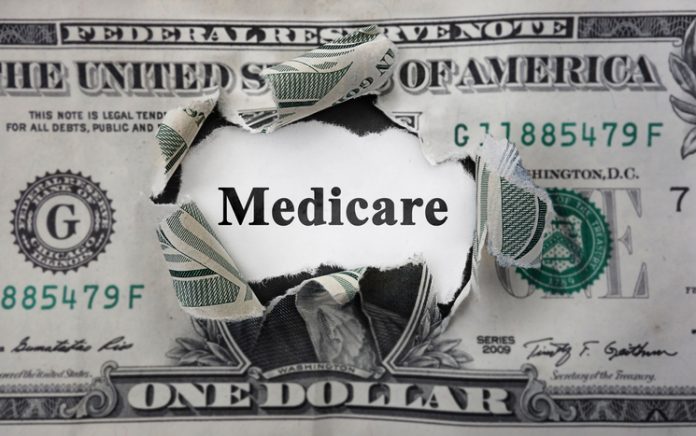By Chad Savage, M.D.
During his State of the Union address, President Joe Biden and congressional Republicans had an entertaining back and forth about the president’s claim that Republicans wanted to “sunset” Medicare. The raucous exchange ended with both parties applauding their apparent agreement not to touch the popular program.
However, that’s not possible. Medicare’s coffers are running dry, and the program’s trustees predict Medicare will run out of money by 2028. With the aging Baby Boomer demographic, the cost of Medicare continues to grow significantly, crowding out other governmental priorities. Despite the spectacle of apparent bipartisanship, reality will soon come calling.
MSAs to the Rescue
Thankfully, there is a way for Congress to avert this looming disaster while upholding its promise to save Medicare. The solution lies buried in a little-used Medicare plan known as medical savings accounts (MSA). These accounts would be like a health savings account (HSA) in that the government funds would be controlled by Medicare recipients to spend as they see fit on their own health care instead of asking permission from Medicare bureaucrats. This allows patients to engage in the 90 percent of outpatient medical care that is “shoppable” on price and quality outside of artificially restrictive insurance networks.
MSAs also functionally make normally costly “first dollar coverage” achievable. They do so by combining Medicare-funded MSAs to pay low-cost expenses with high-deductible Medicare insurance to cover high-cost medical expenses, such as hospitalization. If made more widely available, MSAs would allow Medicare recipients to use their immense clout to introduce cost-constraining free-market forces into the out-of-control, centrally-priced health care system.
Further, with a slight revision to IRS tax code 213(d), Congress could ensure MSAs can be used for more affordable direct primary care (DPC), surgical centers, and other market-based medical providers. Like HSAs, MSAs cannot currently be used for some of these options because the IRS doesn’t consider them “medical care.” For example, the IRS considers DPC an insurance plan, even though it is not insurance at all. Members pay a monthly fee similar to a gym membership.
Hidden Prices
One of the primary reasons for the monumental cost of health care is that patients are disconnected from prices and do not believe the cost of care affects them. It affects us all—it is simply buried within a mountain of taxes, deferred wages, copayments, and premiums. This labyrinthine payment complex hides the inflated price, making high prices possible and confirming that the only way to perpetuate a falsely priced system is to obscure and subsidize it.
The solution to false pricing is transparency combined with knowing what the prices are and having the power to do something about them. By putting power in the hands of the patient, MSAs do exactly this, empowering patients to know prices, reject mispriced services, and replace them with better, more cost-efficient service providers.
The ensuing competition will incentivize cutting administrative waste as overly wasteful service providers will not be able to price their services profitably against more efficient, less bureaucratic competitors.
Ironically, streamlining is good for doctors and nurses, too, as they will be able to do more of what they love—caring for patients. This is because financially empowered patients would rather pay for quality care instead of wasteful activities that do not contribute to their well-being. As things that are inefficient go away, patients’ unwillingness to pay for bureaucracy can make providers more productive and save them from the burnout-inducing processes causing an exodus of professionals from health care.
Many insurer-mandated wasteful processes exist because the patient is not the payer. Insurers require massive amounts of data to justify payment and assess quality, something a consumerized patient does innately without charge. To meet this demand, staff is diverted from patient care to data entry, worsening care.
Put Patients at the Center
Despite appearances, medical services are designed to satisfy payers and only superficially the patient. MSAs re-establish the patient as the all-important payer instead of simply functioning as the substrate between doctors and insurers through which the financial transaction occurs. MSAs place the patient at the center of health care, take decision-making away from administrators, and restore it to its most ethical location: between the doctor and patient.
Medicare accounts for 21 percent of health care spending. Modifying who controls. Medicare payments may seem inconsequential. However, what happens in Medicare spills into the broader health care system. Thus, expanding Medicare MSAs would go well beyond that 21 percent and fundamentally transform American health care.
Congress has the power to enact these simple but profound changes. They should act urgently to save Medicare.
Chad Savage, M.D. (info@d4pcfoundation.org) is the founder of YourChoice Direct Care in Brighton, Michigan, and president of DPC Action. A version of this article appeared in the Washington Examiner on March 17, 2023. Reprinted with permission.





















